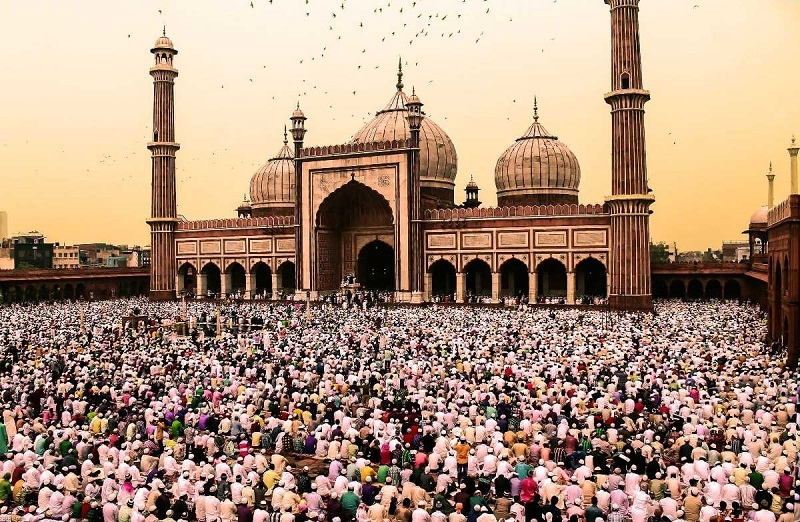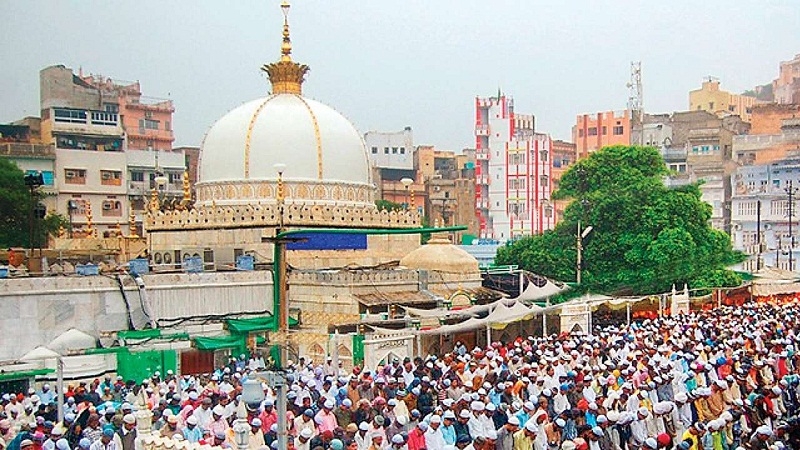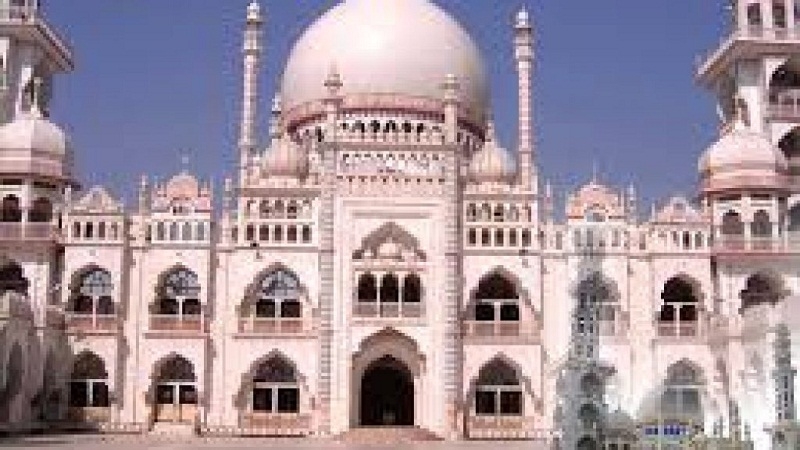A Holistic and Historic Appraisal of Indian Islam

This writing should be taken as an open letter to the famous journalist Tavleen Singh. Celebrity actor Naseeruddin Shah and Tavleen Singh assert (Ref: Indian Islam is Special, Indian Express, Sept. 5, 2021, p.13) that Indian Islam is special for the following reason: It is relatively tolerant toward other faiths, in comparison to Islam in other countries.
Tavleen Singh goes further to say that, on arriving in India, Islam came to be influenced by Indic religions and imbibed their tolerance. Shah claims that Indian Muslims have learned to deal with living with people of other faiths better than Muslims of other countries. It is to be shown here that these claims are based on superficial knowledge about other countries and Sufism. At best they are half-truths, if not entirely false.
Islam in every country has evolved differently and acquired some special characteristics. Indian Islam too has certain special features. But they are not those as claimed by the two celebrities mentioned above.
Influence of Indic religions is obvious at the root of Islam. A Muslim performing Haj shaves his head and wraps himself in a white unstitched cloth in the fashion of a Buddhist monk. He goes around the holy shrine seven times reminding one of the holy Parikrama of all Indic religions.
In any pious community there is a quest for the fundamentals of their religion, and Indian Muslims are no exception. Nowadays there is an incessant chatter in the Indian media, that the Wahhabi movement is a fundamentalist one; in the process they lionize the Wahhabis. They also claim that Sufism is an Indian development due to the influence of Indic religions on Islam. This kind of mindless assertion unwittingly makes Wahhabism attractive to the pious community. The truth is that Islam’s Sufism is not a product of contact with Indic religions after its arrival in India. History shows that Sufism is a part of the fundamentals of Islam, from the beginning, whereas Wahhabism is a relatively recent movement. We shall speak about Wahhabism later.
Early History of Sufism: During the lifetime of the holy prophet Hazrat Mohammad, there were a group of twelve people who gave up all possessions, wishing to live a simple unencumbered life aiming at God realization. The prophet accorded them a place of honor and they were called people of the bench or Suffah (Arabic for bench). From Suffah they came to be called Sufis. As per an alternative opinion, they wore woolen clothes while wool is called tawassuf in Arabic. From this they came to be called Sufis. I request the learned celebrities to refer to two famous books, Sufi Orders of Islam by J. Trimingham and Spiritual Dimensions of Islam by Ann Mary Schimmel.
Right from the beginning, Sufi orders existed in all countries from Morocco to India, without exception. It is worth drawing attention to a prominent Sufi order of Turkey called the Mevlevaiyya order, because its founder was the famous philosopher-poet Maulana Jalaluddin Rumi. In one of his poems, he described his monistic mystical experience in the following words:
I knocked at the door and a voice inside asked ‘Who is it?’ I said, ‘I am so and so’, but the door did not open. I knocked again and the voice asked ‘Who is it?’ I said, ‘it is I’; the door did not open. I knocked for the 3rd time, and heard ‘Who is it?’ I said, ‘It is you, my friend’, and the door opened.
This is not an exact translation of the poem written in Persian, because I am quoting from memory, although it is substantially correct. There were three prominent orders in Turkey – Mevlevaiyya, Akhi and Bektashi. All of them preached universal love without sectarian boundaries. They had a strong influence in all regions of Central Asia. The Ottoman emperors of Turkey had a policy of tolerance toward other faiths. It is during the Ottoman rule that a nearly two-million-strong Christian Armenian community flourished in Turkey. It is another matter that toward the end of Ottoman rule in 1915, there were massacres of the Armenians, which continued off and on during the 1920s during the rule of Kamal Ataturk.
In 10th century Baghdad, a Sufi called Mansur al Hallajused to go into a trance, from time to time. He used to say that he united with God in these trances. He was lashed and beheaded because he had said, “Ana’l Haqq” (I am the truth). There was a sort of turmoil in Sunni Islam after this event. Later, the balance was restored by a much respected scholar named, Imam Muhammad-i Ghazali. Sufis were always held in high regard, and after Imam Ghazali’s intercession, Sufis were not persecuted as heretics. There was equipoise between the Ulema’s Sharia (Islamic law) and the Sufi’s Tariqa (spiritual practices) in Sunni Islam, and the people respected both. This equilibrium lasted for centuries.

The Chishtiyya order is the most influential and the largest order in India. A succession of great saints decorated this order, among who were Baba Farid alias Fariduddin Ganj Shakar, Nizamuddin Aulia, Amir Khusrau and Salim Chishti of Fatehpur Sikri. All of them had a large number of Hindu followers. They preached amity between different faiths.
The annual Urs ceremony in the Chishtiyya Dargah of Ajmer draws a number of Hindu devotees because the Khichri served in the Langar (communal feast) is purely vegetarian and contains no onion and garlic. Khwaja Moinuddin Chishti, commonly called Gareeb Nawaz (compassionate to the poor), has the largest following among the Muslims of the Indian sub-continent. One can confidently say that the Chishtiyya institutions are something special about Indian Islam.
One Chishtiyya Sufi, Amir Khusrau, fell in love with and identified himself with Indian Classical music. Thus started a tradition among Indian Muslims to love and develop Indian Classical music, which became a bridge between Hindus and Muslims.
Apart from the Chishtiyya, there were mainly three Sufi orders in India̶ Suhrawardiyya, Qadiriyya and Naqshabandiyya. The first two were very syncretic in their approach and preached universal love. Mughal prince Dara Shikoh’s guide was a Qadiriyya Sufi.
However, the Naqshbandiyyas were very sectarian. Two Sufis of this order, father and son, introduced Islam to Kashmir. The father influenced the Hindu King of Kashmir to convert to Islam and induced him to dump all the books stored in various temples into the Dal Lake. The volume of these books was so huge that a causeway sprang up in the lake which still exists (Ref: A history of Muslim rule in Kashmir by R. K. Parmu). Naqshbandiyyas persecuted the Hindus and Sikhs wherever they could.
Naqshbandiyyas were most politically active among all Sufi orders and influenced the affairs of the Mughal court. Abul Fazl, Akbar’s court historian and translator of the Bhagavad-Geeta into Persian, was murdered. It is not well known that Jahangir tortured Guru Arjun Dev of the Sikhs (Ref: A History of the Sikhs by Khushwant Singh) till he floated away in a feverish state in the river beside his jail, never to surface again. It is well known that Aurangzeb was influenced by Naqshbandiyyas of Sirhind.It is said that the most horrendous anti-Hindu Noakhali riots in 1946 in the eastern part of present Bangladesh was led by a Peer (holy man) of this order.
The Balance between Sharia and Tariqa gets disturbed: In 18th century Saudi Arabia rose a scholar cum preacher named Abd-el-Wahhab, who campaigned against Sufism. He said veneration of and pilgrimage to Sufi tombs amounted to idolatry, and laid emphasis on Sharia only as practiced in Salafi law. His writings were revivalist, anti-Shia and prescribed strict enforcement of the Sharia in all its aspects. He was extremely strict about the purdah of women. A kingdom was soon established in Saudi Arabia which strictly followed Wahhabi thoughts. All Sufi tombs and shrines were destroyed within its boundaries.
In India there was a great Islamic scholar and prolific writer named Shah Waliullah, who was a contemporary of Wahhab. His thoughts about non-Muslims, women and strict application of Sharia resembled Wahhabism. He wanted all Muslims to learn Arabic and dress and behave like Arabs. However, he did not express himself against Sufism. He asked the Muslim Nawabs to ban public celebrations of all Hindu festivities, such as Holi and Diwali and ritual bathing in the river Ganga. He became extremely popular among the Ulema of India.

At the time of India’s independence in 1947, the anti-Sufi Deobandis were a small minority and the Barelvis were in the majority. The former opposed partition of India, not for any nationalistic reasons, but because it would divide the Muslim Ummah (Muslim body politic).It is the Sufi-loving Barelvis who were mainly responsible for the demand of partition of the country and the massacres that followed. Earlier we have referred to the anti-Hindu Noakhali riots in eastern Bengal (now Bangladesh) being led by a Peer (holy man). The Sikh retaliation in the Punjab was only a reaction.
In 1973, with the formation of OPEC (Organization of Petroleum Exporting Countries), Saudi Arabia became very rich overnight. They started to fund Wahhabi-Deobandi madrasas (Islamic schools) all over the world. Thus, the balance that was established by Imam Ghazali between Sharia (law) and Tariqa (spiritualism) got disturbed. The destruction of all Sufi Khanekas, during the 1920sby Kamal Ataturk in Turkey,had already created an imbalance in that part of the world.
Since the late1970s, Pakistan encouraged founding of Wahhabi-Deobandi madrasas in the Pashtun areas of North West Frontier Province of Pakistan and South East Afghanistan with Saudi funding, as an antidote to the Soviet invasion of Afghanistan. The Taliban are the students (Talibs) of these madrasas. Therefore, the Taliban are Wahhabis. They should not be labeled ‘fundamentalist’.
Morocco, Malaysia and Indonesia: The kingdom of Morocco has, since the Middle Ages, given shelter to a large number of Jews who escaped Spain and Portugal due to religious persecution. The Jews always lived in peace there and prospered. Most migrated to Israel when that country was created in 1948. Even now the love between the Moroccan king and the Rabbis and the Jewish community leaders is enduring. Every year many of them gather at Rabat during the Throne Celebration to felicitate the King.
The Federal Parliamentary Constitutional Monarchy of Malaysia has a large number of Buddhist, Christian and Hindu minorities. Sometimes the relationship between the Muslim majority and the religious minorities becomes uneasy, but it has never degenerated into large scale riots and killings.
The Republic of Indonesia has a large number of religious minorities who live in peace among the majority Muslims. Traditionally, there was peaceful coexistence, which is now occasionally disturbed due to the growing influence of Wahhabism since the 1980s.
In both of Malaysia and Indonesia, the official language is written in the Roman script, which is understood by all, and there has never been selective purging of words; Muslims and religious minorities speak and read the same newspapers, magazines and books in the same language.
In contrast, Indian Muslims have created a language, Urdu, that is written in Arabic script, unintelligible to the Hindus of the country. Besides, all words, except the pronouns and the verbs, of Sanskritic, proto-Sanskritic and praakrita (non-Sanskritic) origin have been purged from Urdu and replaced with Arabic-Persian words. As a result, formal Urdu in which any subject, such as politics, social thoughts or history, is expressed is unintelligible to the Hindus. For instance, the Urdu news broadcast from Lucknow Door Darshan, is unintelligible to the present author who has lived in U.P. for nearly 40 years and is fluent in Hindi. In its present state, Urdu is almost a foreign language. The history of the language shows that from the days of Moghul emperor Aurangzeb,it erected a communication barrier between Muslims and Hindus (Ref: Samskriti Ke Chaar Adhyay by Ramdhari Singh Dinkar).Urdu which is considered the language of the Muslims is certainly a special feature of Indian Muslims.
Conclusion: Indian Islam does have certain special characteristics as outlined above. By now it should be obvious to the reader that Indian Islam is very much influenced by various Islamic movements in other countries and evolves along world-wide trends. The Khilafat movement in India during 1919-20 is a proof. Considerable growth of Wahhabism in the last century is another indication.
Indian Islam has not learned any better than Islam in other countries to live with other faiths. Mass exodus of Hindus from what is now Pakistan and Bangladesh is testimony to it. Exodus of the Kashmiri Pandits from the Kashmir valley in 1989-90 is a painful reminder of the same. Our journalists and celebrities should educate themselves about the history of Sufism and Islam in other countries, such as Turkey, Morocco, etc., before pontificating. Above all, they should remember that Sufism has existed from the inception of Islam and is among the fundamentals of Islam, and stop calling the anti-Sufi Wahhabi Taliban dispensation of Afghanistan as fundamentalist.